The content of the article
Each owner, once again faced with the problem of bathing a cat or cat, asks one simple question - why are these pets so afraid of water? Indeed, because for humans and most animals, both domestic and wild, water is an absolutely normal environment for temporary living. We bathe, drink - water is vital for our body. But for some reason cats don’t like to swim. Because of this, the process of washing the animal turns into a real test. Firstly, you need at least two people, one of whom will hold the animal, and the other to wash. Secondly, the trauma risk of the procedure just rolls over - the cat is trying hard to get out of the "trap", leaving deep scratches on the human skin. Thirdly, a person understands the inevitability of bathing and does not see an alternative. Indeed, it’s also impossible not to bathe the animal, because the wool sooner or later gets dirty anyway. Why cats are afraid of water, is it possible to fight this, and how to bathe an animal properly, let's try to figure this article out.
Why are cats afraid of water?
In nature, not all cats are afraid of water. For example, formidable and predatory tigers are very fond of water and do not refuse to splash in water when possible. Moreover, there is a wild cat fisher that has special membranes on its paws - they help it move more quickly and directionally in the water. A spotted animal with special grace dives to the bottom, moves against the tide and perfectly catches even the smallest and fastest fish. But why are domestic cats afraid of water, like fire? There are many reasons for this.
- Thermoregulation. First of all, the cat is afraid to freeze or overheat. The air in the undercoat forms an air cushion for the animal - it protects the cat from overheating in the summer and hypothermia in the winter. That is why cats can easily tolerate temperature changes. But when we bathe an animal, the pet loses its natural protection, it often freezes. In addition, the feline’s body temperature is slightly higher than that of humans. This means that water that is comfortable for our body can simply be cold for a cat. That is why after bathing the animal freezes for a long time and trembles until the hair is completely dry.
- Smell. As you know, cats and dogs are very sensitive to strangers and unknowns, which means potentially dangerous odors. But we, trying to take care of the animal, use special soap solutions and compounds, many of which are excessively aromatic. For a cat, this is a real disaster - you don’t know how to smell, but even so intensively.
- Danger In the animal kingdom, a cat is not always a hunter, sometimes you have to hide from a stronger and more aggressive predator. Beware of his life, the cat will not give out its presence, which is why cats walk quietly and quietly. But the smell of wet hair is like a red flag for the enemy, which is why cats are once again afraid to urinate.
- Pollution We all know that cats are very clean animals, they wash their tongue. However, in nature, if a cat enters a pond, she has to clean her fur for a long time not only from water, but also from bacteria and germs. As a result of this, there is a risk of pathogens entering the animal’s stomach, which can lead to infection. Zoologists say that intuitively a cat feels danger and that is why it refuses dubious bathing.
- Water entering your ears. Every owner should know that getting water in your ears is a terrible mistake that must not be allowed. Otherwise, it is fraught with inflammation and even complete loss of hearing of the pet. For a cat, hearing is of great importance, without it she will not be able to protect herself, she will not be able to hunt, etc.That is why the animal carefully guards its sensory organ and avoids risks.
- Stress. Summing up, we can say that bathing for a cat is a great stress, a real abuse of personality, which cats simply do not tolerate. This is such a freedom-loving creature that will not dance in front of the owner to get his approval. And to do something against his desire - in general, from a number of fiction. Therefore, coercion cats endure extremely difficult, both physically and mentally.
Fear is due to genetic and innate instincts. Most domestic cats descended from a steppe cat, which did not see water in large quantities. In addition, the kitten remembers that the cat-mother did not teach the rules of his behavior in water, which means that this is an unknown and dangerous element that should be avoided. But is it possible to teach a cat to swim so that she is not afraid of water?
How to teach a pet to water?
So that the animal is not afraid of water, it must be taught from an early age to the bathing procedure. In this case, many subtleties and nuances should be observed.
- So that the baby is not afraid, he needs to gradually show from a very early age what water is and that it is not dangerous. Of course, you cannot throw a newborn baby into a bathtub filled with water. But the monthly kitten can be left in front of a basin filled with 2 cm of water. You can put toys there, but do not lower the pet itself. Give him the opportunity to wet his feet and understand that water is not dangerous. From 3-4 months a kitten can be bathed, do it very carefully and safely, first collecting a little water, and then increasing the size of the bathing tank and the volume of water in it.
- Until six months, the kitten needs to be bathed several times, otherwise it will be very difficult to instill a love of water procedures later on.
- Be sure to pay attention to the temperature of the water in which you plan to bathe your pet. It should be similar to the body temperature of the animal, approximately 38-39 degrees. Thoroughly warm the room in which the water procedures will take place. Try not to take out the kitten after bathing in a cold room - the baby may get sick.
- Choose bathing detergents that are odorless, especially pronounced. Often this is what scares the animal away and makes it abandon the procedure.
- Using a hair dryer after bathing is a very controversial issue. On the one hand, the baby needs to be dried as soon as possible and the pet is brought back to its original condition so that the animal does not catch a cold and does not get sick. On the other hand, loud noise and a stream of hot air can scare the poor cat even more. If the air temperature in the room is high enough, the hair can not be dried, if the cat is trembling from the cold, it is better to use a hairdryer. Try to set the minimum heating temperature and low-intensity air flow so as not to cause another psychological trauma to the animal.
- Some breeders recommend using one simple, but incredibly effective way to teach animals to water. Draw a little water in a wide basin or bath so that the liquid does not reach the abdomen - it is only at the level of the paws. Put a small live fish in the water and leave the animal alone with its prey. Your cat will like this kind of entertainment, it will crawl into the water to catch a fish.
- For cats that absolutely do not recognize water and experience extreme stress during swimming, dry shampoo can be advised. It is made in the form of a fine powder that needs to be sprayed onto the surface of the animal’s hair. After 5-10 minutes, when the composition completely absorbs dirt and grease from the wool, you need to carefully comb the animal. Use a comb with rare teeth to help you remove dirt, powder residue, dead hair and parasites. Of course, dry shampoo does not replace water procedures completely, however, it will help to conduct unpleasant bathings less often.
After bathing, be sure to spend some time with the cat so that the animal does not perceive the procedure as a punishment. Stroke and praise the cat, calm the pet. Be sure to treat your favorite treat. The animal will certainly appreciate the reward for its torment.
Fortunately, not all cats are afraid of water, some representatives of the feline family splash in ponds and a bath with great pleasure. If you come across just such a lover of water procedures - you are incredibly lucky!
Video: why are cats afraid of water?

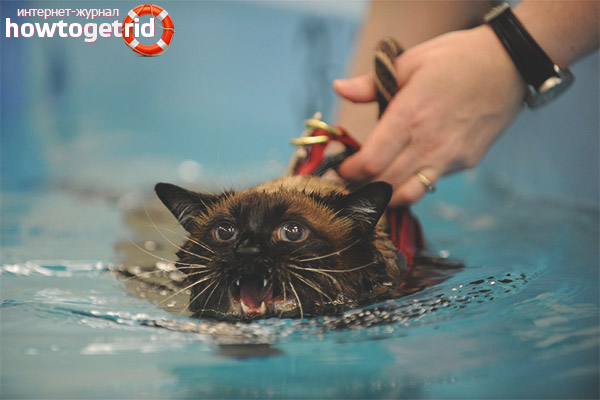
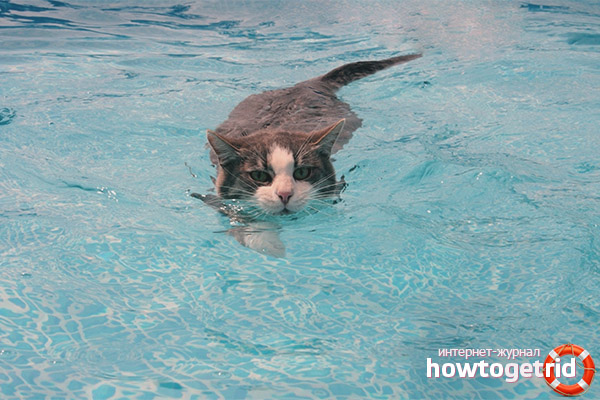
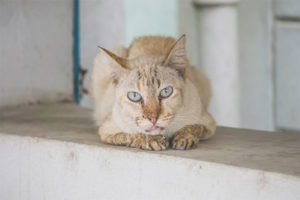



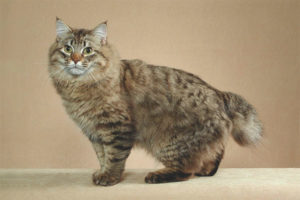

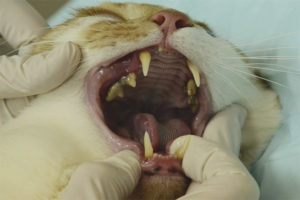
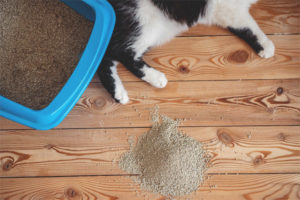
Submit